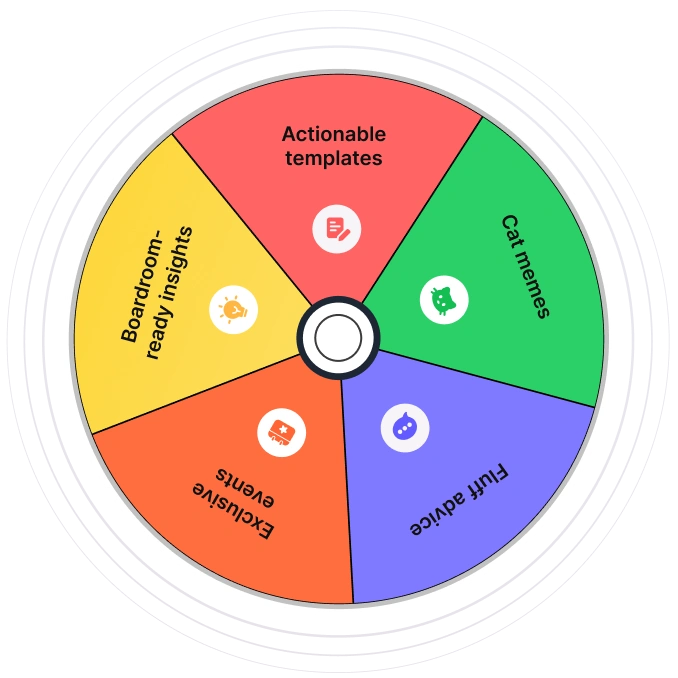ISO 27001 is a globally recognized standard for information security that helps organizations up their information security game and keep up with threats of various kinds. Today organizations face numerous security risks that can jeopardize their reputation. Hence having a comprehensive risk management policy is highly needed.
Risk management is a vital aspect of the ISO 27001 standard. Framing a risk management policy helps in staying prepared for all certain and uncertain elements of risk—with it, you can respond to risks effectively and learn how to mitigate them while ensuring every single aspect within your ISMS maintains the highest standards of security.
In this blog, we will elaborate on the importance of the ISO 27001 risk management policy and what the policy includes. We have also included a downloadable template for you to get started!
What is ISO 27001 risk management policy?
The ISO 27001 risk management policy is a document that outlines the guidelines for how an organization will identify and manage risks; essentially defining their risk appetite and preparing for various types and levels of risk.
Rather than a rule-based management system, ISO 27001 proposes this risk-based approach to help organizations deal effectively with known and unknown risks. It is a mandatory ISO 27001 document that gives a more comprehensive and standard approach to handling risks.
For an ISO 27001 certification, the following are important clauses cover risk management:
- ISO 27001 Clause 6.1.2 (Information Security Risk Assessment) – Requires organizations to establish and maintain risk assessment processes.
- ISO 27001 Clause 6.1.3 (Information Security Risk Treatment) -Requires organizations to select appropriate treatment options to address risks.
- ISO 27001 Clause 8.2 (Information Security Risk Assessment)- Requires organizations to perform risk assessments at planned intervals and when significant changes occur.
- ISO 27001 Clause 8.3 (Information Security Risk Treatment) – This clause requires organizations to implement the risk treatment plan and retain the results (documented) of the risk treatment.
Here is a template for the ISO 27001 risk assessment template:
Download Your ISO 27001 Risk Assessment Template
Importance of ISO 27001 risk management policy
An ISO 27001 risk management policy helps everyone understand the standard approach to risks and how to handle them. Here are some reasons how the ISO 27001 risk management policy helps organizations enable effective mitigation and management.
- The policy helps you identify and assess risks related to information security
- It provides a standard framework for treating and mitigating the risks
- It helps organizations maintain confidentiality, integrity, and availability of their data and systems
- It helps in protecting sensitive data from theft and unauthorized access
- It helps organizations in meeting regulatory and compliance requirements
- It helps in demonstrating a commitment to information security to clients and stakeholders
An effective ISO 27001 risk management policy plays a vital role in streamlining an organization’s approach to identifying, evaluating, and mitigating risks.
To further strengthen your security posture, it’s important to align this policy with your ISO 27001 vulnerability management practices—ensuring that potential weaknesses are identified and addressed before they escalate into major issues.
What does ISO 27001 risk management policy include?
An ISO 27001 risk management policy includes different sections, which can vary from one organization to another. The policy document typically includes the following components.

1. Purpose and scope
This section states the purpose of the ISO 27001 risk management policy and outlines the organization’s commitment to managing risks and protecting sensitive data. The scope describes the individuals, processes, and information to which this policy is applicable.
Also read: ISO 27001 scope statement
2. Roles and responsibilities
This section outlines the roles and responsibilities of everyone mentioned under the scope. The section lets employees know what is expected of them to manage risks. It outlines how different individuals will perform their roles to identify, assess, and mitigate risks.
3. Risk Management Techniques (Identification, Assessment, and Treatment)
This section establishes the guidelines that the employees, in general, will follow to identify, assess, and mitigate risks. It also establishes the procedure to prioritize risks and choose the relevant mitigation options for different risks.
4. Risk monitoring and evaluation
This section defines the steps employees need to take to monitor, review, and evaluate risks. This is to ensure that risks are efficiently handled over time. It outlines the timeline to regularly monitor the risks and controls associated with the risks.
5. Training and Awareness
This section establishes the training requirements for employees and third-party users involved in the risk management process. It outlines the various training modules and awareness sessions designed to ensure that everyone understands their roles and responsibilities in maintaining information security.
A comprehensive ISO 27001 training manual is often used to standardize efforts, ensuring that all personnel – regardless of the role they play – are equipped with the necessary knowledge to support the compliance needs and risk management objectives of the organization.
6. Documentation
This section mentions the requirements for documentation. It includes the guideline to document the complete risk assessment, risk treatment, control implementation, and other risk management processes.
7. Policy compliance
This section outlines the areas like compliance measurement, policy exceptions, and other compliance requirements. It also outlines the consequences of non-compliance with the risk management policy.
8. Policy review and updates
This section outlines the timeline and framework for reviewing and updating the risk management policy to ensure it is efficient and has relevant processes in place. It also describes the process of reviewing the ISO 27001 risk management policy when major changes occur in the company’s IT environment.
Closing Thoughts
To summarize, the ISO 27001 risk management policy helps you strengthen your security posture. Establishing a solid risk management policy is an excellent way for organizations to proactively assess and manage operational risks. It also forms an important step within the ISO 27001 certification journey, helping you devise a strong plan of action to stay prepared and act swiftly when a threat presents itself.
To add to your risk management ventures, a more comprehensive compliance management and automation solution like Sprinto can help you efficiently manage risks to be ISO 27001 compliance-ready.
If you need help creating your risk management policy while considering the various ISO 27001 compliance requirements and more, Sprinto has the perfect solution for you. Speak to our experts now.
FAQs
Does ISO 27001 include risk management?
Yes, risk management is a crucial part of ISO 27001. Clauses 6.1.1, 6.1.2, 8.2, and 8.3 talk about risk management in ISO 27001.
What is the ISO 27001 risk management methodology?
The ISO 27001 risk management methodology defines the process of systematically identifying and evaluating the organization’s risks to understand their impact on the organization. It also describes the process to mitigate and reduce those risks.
What is the ISO risk management policy?
The ISO risk management policy is a formal document that defines an organization’s approach to identifying, assessing, and treating risks that could impact information security. It sets the principles, responsibilities, and processes for managing risk in alignment with ISO 27001 requirements.
What is the risk management clause of ISO 27001?
Clause 6.1 of ISO 27001 covers risk management. It requires organizations to establish a systematic process to identify information security risks, assess their potential impact, and determine appropriate risk treatment plans to protect the confidentiality, integrity, and availability of information.
What is the ISO 27001 risk management methodology?
The ISO 27001 risk management methodology is the structured process an organization follows to manage information security risks. It includes defining the risk assessment criteria, identifying risks, analyzing and evaluating them, and selecting suitable risk treatment options based on business context and regulatory requirements.
Gowsika
Gowsika is an avid reader and storyteller who untangles the knotty world of compliance and cybersecurity with a dash of charming wit! While she’s not decoding cryptic compliance jargon, she’s oceanside, melody in ears, pondering life’s big (and small) questions. Your guide through cyber jungles, with a serene soul and a sharp pen!
Explore more ISO 27001 articles
ISO 27001 Overview & Requirements
ISO 27001 vs Other Frameworks
ISO 27001 Audit & Certification Process
ISO 27001 Management & Assessment
ISO 27001 Implementation & Automation
ISO 27001 Industry-Specific Applications
research & insights curated to help you earn a seat at the table.








